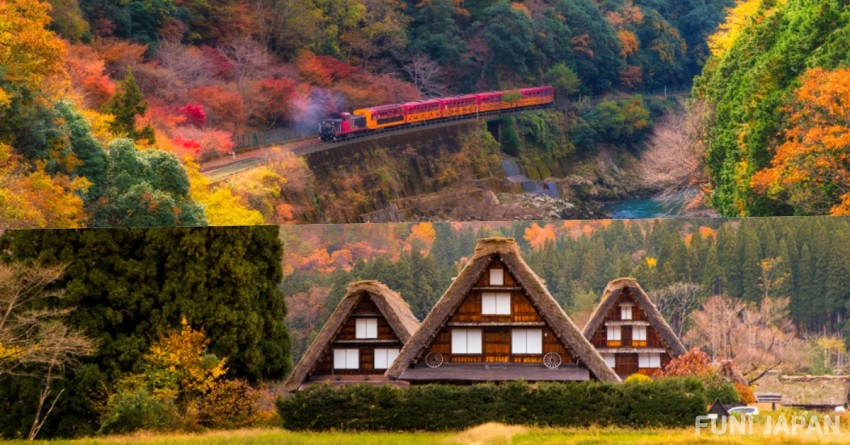
It's autumn! It's autumn leaves season!
As the calendar turns to November, the once-a-year season of autumn leaves reaches its peak. Following on from the must-see hanami etiquette and what to bring before visiting Japan in the spring in the cherry blossom season, this time we will introduce you to the basic knowledge you should know before visiting the autumn leaves spots!
Whether you are beginners who are going to Japan for the first time to see autumn leaves or repeaters who have already visited Japan in autumn, it's time for you to start putting this list into action.
When is the best time to see autumn leaves in Japan?
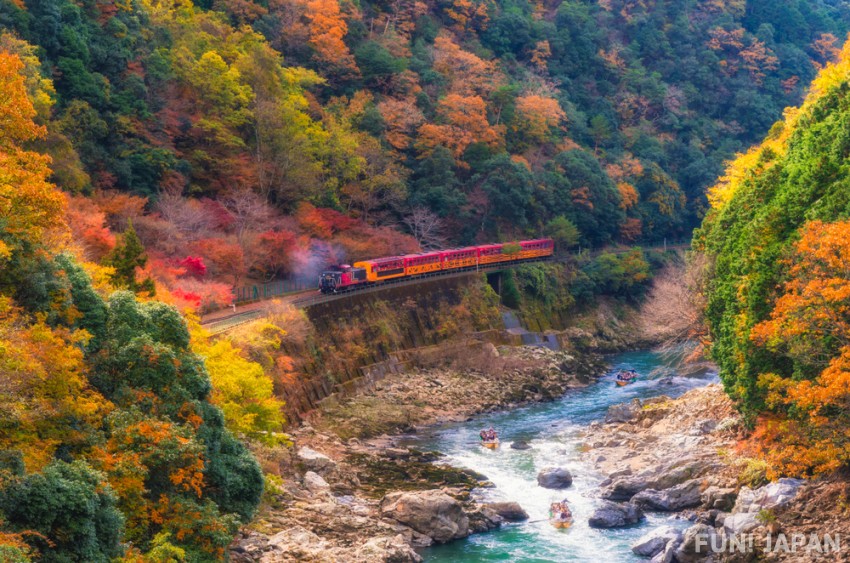
Before planning your trip to Japan, let's grasp the best time to see autumn leaves in various parts of Japan. The best time to see autumn leaves every year is as followsー
- Hokkaido/Tohoku region:
Early October to late November - Kanto/Koshin/Tokai region:
Late November to early December - Kinki/Chugoku/Shikoku/Kyushu region:
Early December to mid-December
However, the progress of the autumn foliage changes depending on the weather conditions of the year, so it is recommended to check the forecast of the best time to see the foliage announced by each place before you leave.
When it comes to sites that post forecasts of the best time to see autumn leaves, the official weather forecast media "tenki.jp" of the Japan Weather Association and "weathernews.jp" operated by Weathernews Co., Ltd. are representative. From around early October every year, these sites will display the best time to see autumn leaves around the country with a map, and frequently update the latest information during the season. Be sure to use them when collecting autumn leaves information for your travel destination.
Related articles:
- 【FUN! QUIZ】Places you should definitely visit if you come to Japan in Autumn! How many of them do you know?
- See the Beautiful Scenery of Fall from your Train Window - A Journey on Local Train Lines
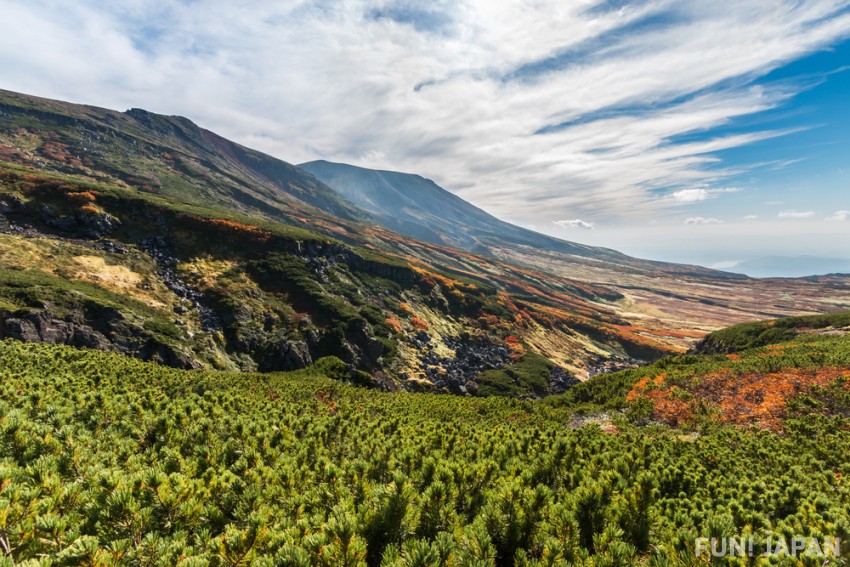
Mt. Asahidake with an altitude of 2,291m, located in Hokkaido's Daisetsuzan National Park, is known as "the earliest autumn leaves spot in Japan". Surprisingly, the leaves start to change color from the end of August, and in mid-September every year, you can see the very first autumn leaves of the year in Japan.

On the other hand, Atami Baien in Atami City, Shizuoka Prefecture is said to be the "latest autumn foliage season in Japan." The best time to see the plum blossoms is from late November to early December, and early-blooming plum blossoms start blooming around mid-November. If the timing is right, you may be able to see autumn leaves and plum blossoms at the same time.
Spot Information
- Name: Atami Baien (熱海梅園)
- Address: 8-11 Baien-cho, Atami City, Shizuoka Prefecture
- Access: About 15 minutes by bus bound for "Baien/Ainohara" from JR Atami Station, then about 2 minutes on foot from "Baien" bus stop
The start of autumn leaves varies from region to region. Ranging from late summer to early winter, autumn foliage can be viewed at different regions all over the country. Choose your destination according to your schedule!
Related articles:
- 7 Best Places to See Autumn Leaves ~East Japan~
- Top 7 recommended autumn leaves viewing spot ~ West Japan edition
What is "Momiji Zensen"? 5 frequently used terms related to autumn leaves
Once you've decided on your destination and booked your flight and accommodation, all you have to do is get excited as you gather information! Japanese words related to autumn leaves will come in handy at such times. Let's learn the terms often used in Japanese media in order to get the latest information on autumn leaves.
紅葉狩り (もみじがり / Mo-mi-ji Ga-ri) - Going out for autumn leaves viewing

It is a word that appears in the oldest collection of waka poetry in Japan, the "Manyoshu" (万葉集), and has the meaning of "going out to see the autumn leaves". There is also a theory that the kanji character "狩り'' (kari - hunting) is written as such because in ancient time, the nobles used the analogy 'hunting' to the admiring of nature.
紅葉前線 (もみじぜんせん / Mo-mi-ji Ze-n-se-n) - Autumn leaves front
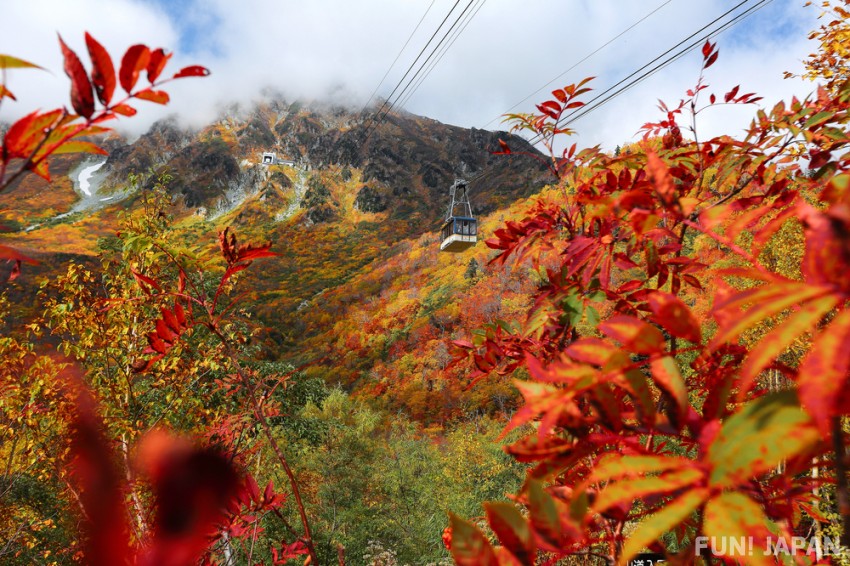
It is a line that connects the autumn leaves time and places of maple and ginkgo - think of the 'cold front' in weather term, except it is used for autumn leaves. From around the beginning of October, the line leaves the north from Hokkaido, and arrives to the south at Kagoshima in early December. (Because Okinawa has a subtropical climate and a warm climate continues throughout the year, it is difficult to see autumn leaves except for some red-colored plants.)
In addition, in contrast to the "autumn leaves front", there is also the term "sakura front" (桜前線 / Sa-ku-ra Ze-n-se-n), which refers to the expected dates of cherry blossom blooming throughout Japan during the spring cherry blossom season.
日本紅葉の名所100選 (にほん こうよう の めいしょ ひゃくせん / Ni-hon Ko-u-yo-u no Me-i-sho Hya-ku-se-n) - Japan's Top 100 Autumn Leaves Spots

Of the approximately 680 fall foliage spots nationwide nominated by the Japan Tourism Association in 2010, 100 were partifularly selected by the publishing company "Shufu-no-tomosha". Among these 100 are Naruko Gorge in Miyagi Prefecture, Mt. Takao in Tokyo, and Kankakei in Kagawa Prefecture, and so on.
桜紅葉 (さくらもみじ / Sa-ku-ra Mo-mi-ji) - Cherry blossoms' autumn leaves
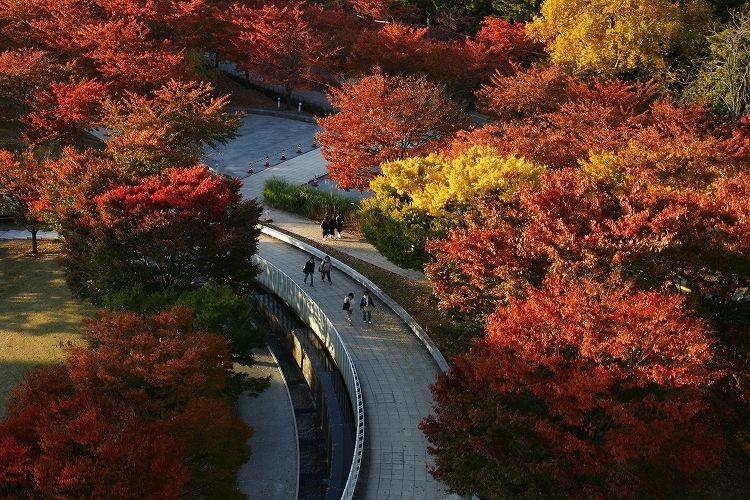
Cherry blossoms' autumn leaves in Niigata City, Niigata Prefecture
©Niigata Visitors & Convention Bureau
The leaves of cherry blossoms do turn red in autumn. Cherry blossoms may have a strong image of “spring” and “pink”, but in fact, the leaves of cherry blossoms also turn red. Among them, Somei Yoshino, which is well known by tourists, is said to be a variety with more beautiful autumn leaves.
青紅葉 (あおもみじ / A-o Mo-mi-ji) - Green maple leaves
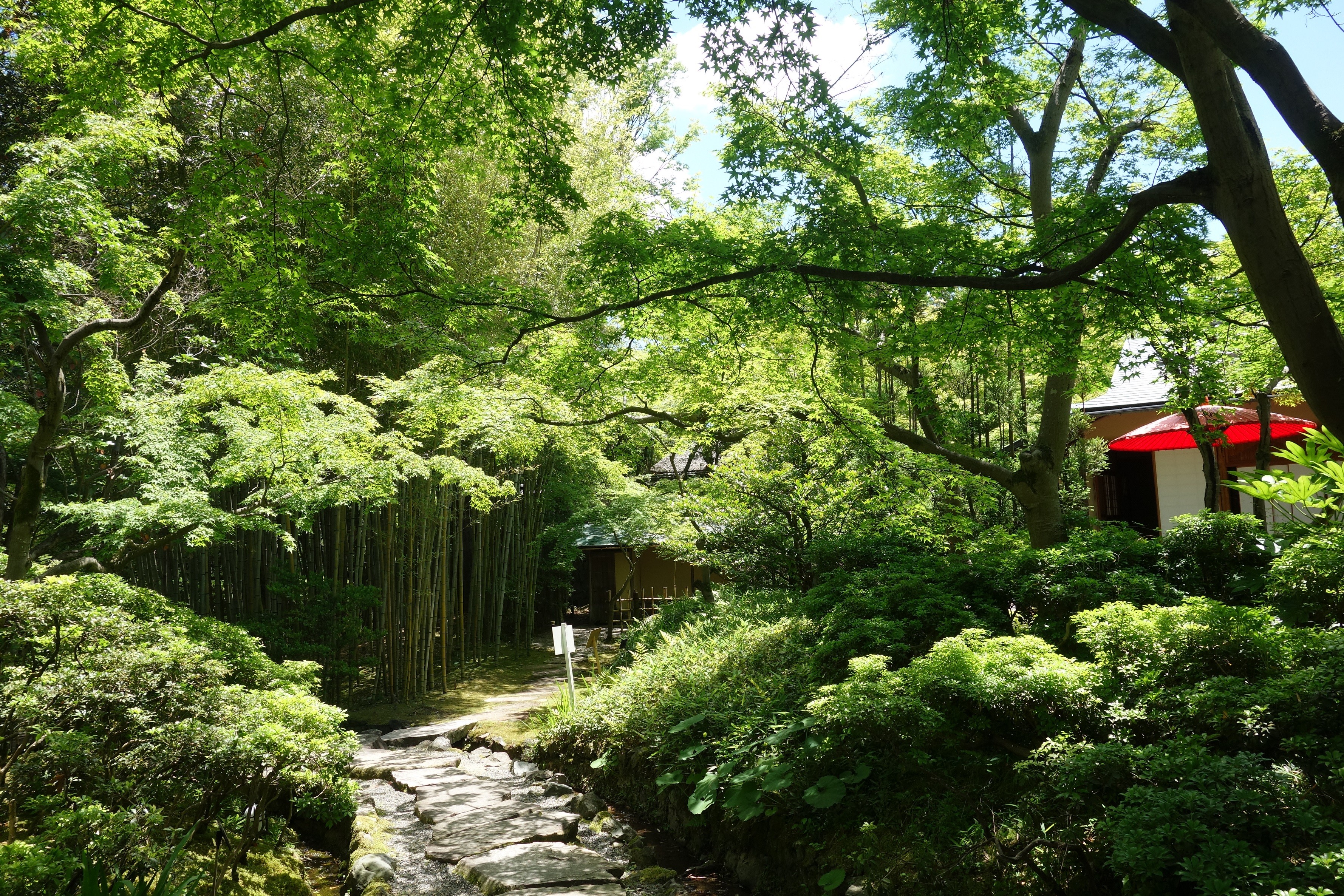
Although it contains the Kanji character "青" for "blue", it actually refers to the green maple leaves that have not yet turned red from May to July. Especially in Kyoto Prefecture, there are many famous spots for green maple foliage, such as the area around Kyoto Station, Gion, Kiyomizu Temple, Sagano and Arashiyama, and so on. Since there are relatively few tourists during the green maple leaves season, it is said that there has been an increase in recent years in the number of tourists who enjoy them as a feature of early summer.
Spot Information
- Name: Yawata City Shokado Garden and Art Museum (八幡市立 松花堂庭園・美術館)
- Address: 43-1 Yawata-Ominaeshi, Yawata City, Kyoto Prefecture
- Access: About 10 minutes by car from Keihan Railway "Iwashimizu-hachimangu Station"
Knowledge that you should also keep in mind ①: “紅葉 = red leaves” is not always the case!?
Many FUN! JAPAN readers are studying Japanese. So, from here, we will dig deeper and explain about "紅葉" (kanji characters mean 'red leaves').

In Japanese, "紅葉" (red leaves) refers to the phenomenon in which the leaves of plants change color from autumn to winter, and since the kanji character "紅" (beni - crimson) is used, the impression of "red leaves" is strong. However, red is not the only color that plants change their leaves into.
In general, "こうよう / Ko-u-yo-u" or the phenomenon in which the leaves turn red is written as "紅葉" in kanji, but when the leaves turn yellow, it is written as "黄葉" (こうよう / Ko-u-yo-u).
In a broad sense, the word "紅葉" (Ko-u-yo-u) is a general term for "紅葉" (red leaves), "黄葉" (yellow leaves), and even "褐葉" (かつよう / ka-tsu-yo-u - brown leaves),''. It also refers to the phenomenon of discoloration of plant leaves themselves. In English, "紅葉" (Ko-u-yo-u) is often translated as 'autumn leaves' or 'autumn foliage' to include all such nuances.
Knowledge that you should also keep in mind ②: What is the difference between "紅葉" (こうよう / Ko-u-yo-u) and "紅葉" (もみじ / Mo-mi-ji)?

If you are a FUN! JAPAN reader who is studying Japanese, you have probably seen the word "紅葉" written in kanji and read as "Mo-mi-ji". Are the meanings exactly the same? Some people may think that, but momiji" is basically a term used to refer to the plant itself, and does not include the meaning of the phenomenon of discoloration.
By the way, "Mo-mi-ji" is also a secret word (words and phrases that can only be understood among certain group of people) that means venison.
Knowledge that you should also keep in mind ③: What is the difference between "紅葉" (もみじ / Mo-mi-ji) and "楓" (かえで / Ka-e-de)?
Because of their similar appearance, "楓" (かえで / Ka-e-de) is often confused with "紅葉" (もみじ / Mo-mi-ji). Botanically speaking, momiji is a kind of Kaede (maple), and both are plants of the maple family Maple genus (カエデ / ka-e-de in Japanese scientific names). In Japan, the leaves with deep notches are generally called "○○-momiji", and those with shallow notches are called "○○-kaede", but there is no clear difference between them, and it is said that only Japanese people make such fine distinctions (perhaps due to existence of two different words).
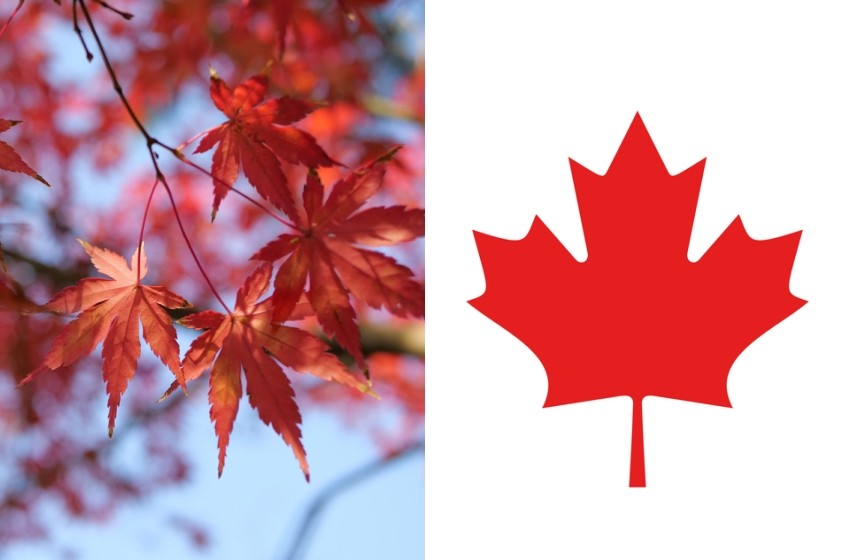
The leaf with deep notches (left) is called momiji, while the one with shallow notches (right), which is familiar on the Canadian flag, is called kaede.
Extra bit of info: Are Ginkgoes also "紅葉" (Ko-u-yo-u)?

Ginkgo (called いちょう / I-cho-u in Japanese) is another spectacular sight that can be enjoyed during the "紅葉" (autumn leaves) season. It is classified in the genus Ginkgo of the family Ginkgo biloba, and the leaves are not in the same classification as "momiji/kaede" (紅葉), but the leaves turn yellow - as in "黄葉" (ko-u-yo-u - yellow leaves).
As mentioned above, when the leaves turn yellow, the kanji is written as '黄葉' (yellow leaves) instead of '紅葉' (red leaves) but still uses the verb '紅葉する' (こうようする / Ko-u-yo-u su-ru) for the 'discoloration'. Even if the pronunciation is the same, the kanji is slightly different and the meaning is different - confusing right?
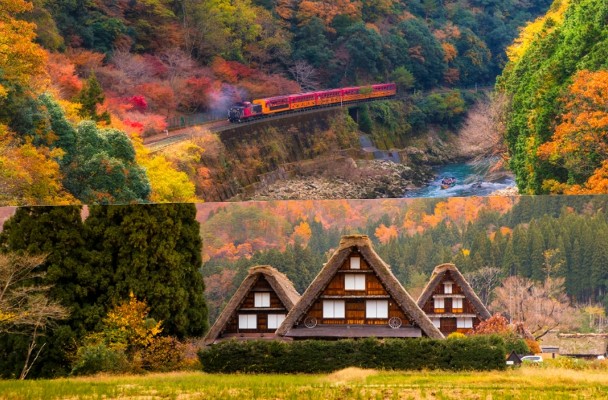
Comments